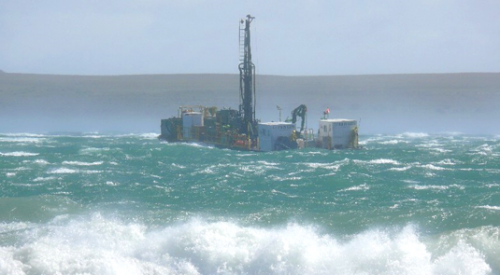Westerly winds and CO2 levels

The end of the last Ice Age was preceded by a gradual rise in atmospheric CO2. A new study supports the idea that a shift in the position, and increase in the intensity, of zonal westerly winds in the Southern hemisphere promoted this rise.
The end of the last Ice Age, which occurred around 11,700 years ago, was heralded by a progressive increase in the concentration of carbon dioxide in the atmosphere. "The reasons for the rise in the level of this greenhouse gas prior to the end of the last Ice Age have been the subject of intense scientific debate," says LMU geobiologist Dr. Christoph Mayr. A team led by Mayr and his colleague Dr. Andreas Lücke (Forschungszentrum Jülich) has now used data obtained from sediment cores recovered from the floor of Potrok Aike Lake in Argentina to test the hypothesis that the increase resulted from the release of CO2 from reservoirs in the deep sea, which was in turn stimulated by a shift in the position and strength of zonal westerly winds in the Southern hemisphere.
Laguna Potrok Aike is 100 m deep and lies in southern Patagonia, placing it right in the middle of the zone in which wind patterns are now dominated by the so-called Southern Hemisphere Westerlies. The team studied oxygen isotope ratios in the cellulose of freshwater mosses preserved at various levels in sediment cores taken from the lake bottom. The data allowed them to deduce the rate of evaporation in the lake and plot its course over the period recorded by the core. Evaporation rates serve as an indicator of the strength of the prevailing winds at any given time. Higher surface wind velocities imply higher rates of evaporation from the lake surface.
Careful investigation of the sediment cores and sensitive analysis of the isotopic composition of the remains of mosses contained within it led the researchers to conclude that, in Late Glacial times, the climate in the Argentinian section of Patagonia was as dry as it is today. "We infer from this that, during the Late Glacial, the zone of westerly winds shifted southwards, and the winds strengthened," says Mayr.
This shift occurred at a time that coincides with the period in which the concentration of atmospheric CO2 reached the level that characterized the whole of the present warm period, the Holocene, until the onset of industrialization. "The intensification of the westerlies ultimately augmented the release of CO2 from the Southern Ocean," Mayr explains. The greenhouse effect of the gas in the atmosphere then provoked a rise in temperature and brought the last Glacial Period to an end. The new findings strongly suggest that the position and strength of the Southern Hemisphere Westerlies are factors that have a significant effect on the carbon cycle and are therefore likely to have a substantial impact on the world's climate. (Geology 2013)
More information: geology.gsapubs.org/content/41/8/831.abstract
Journal information: Geology
Provided by Ludwig Maximilian University of Munich


















